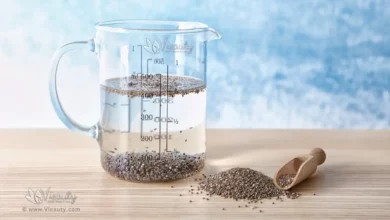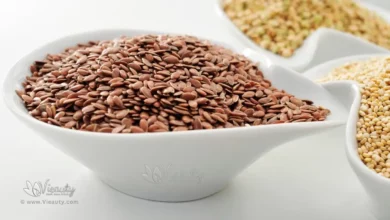Are Grapes Turning Against You? 8 Diseases of Grapes to Watch Out For
Grapes Gone Rogue? Beware of These 7 Sneaky Illnesses
Welcome, grape enthusiasts and fruit aficionados! Today, we’re delving into the shadowy underbelly of everyone’s favorite vine-born delights: grapes. Yes, that seemingly innocent cluster of sweet goodness may have a few skeletons in its closet. But fear not, dear reader! We’re here to shed light on 8 juicy grapes diseases that could be lurking within those plump orbs of deliciousness.
Are grapes really turning their backs on us? Or are they just suffering from a bad case of infamous-villain-itis? Let’s don our detective hats and grape-stained aprons as we embark on this flavorful journey to uncover the mysteries behind these maladies. From sneaky fungal foes to tiny insect infiltrators, we’ll peel back the layers (not literally – please wash your fruits) and find out what’s really at stake for our beloved grapes.
Table of Contents
- Most Common 8 Diseases of Grapes to Watch Out For
- #1. Grapevine Leafroll Disease
- #2. Downy Mildew: When Rain Clouds Bring Grape Troubles
- #3. Black Rot Disease: The Sneaky Threat Among Grapevines
- #4. Powdery Mildew: The White Shroud of Grape Trouble
- #5. Phylloxera Infestation: The Tiny Terror of Vineyards
- #6. Esca Disease
- #7. Anthracnose: The Unwanted Visitor in Your Grapevine
- #8. Sour Rot: When Grapes Turn into Sour Grapes
- Savor Your Grapes Responsibly!
- Final Tips
- Savor Your Grapes, Stay Grapeful!
- FAQs:
- Q: Can I still enjoy my favorite wine without worrying about these diseases?
- Q: How can I tell if my grapes have been affected by one of these diseases?
- Q: Are organic grapes less prone to these diseases?
- Q: What should I do if I suspect my grapes are diseased?
- Q: Can these diseases be harmful to humans if they consume infected grapes?
Most Common 8 Diseases of Grapes to Watch Out For
So grab a glass of grape juice, sit back, and join us as we navigate the vineyards of vineyard woes. Get ready to sip on some knowledge and perhaps a hint of humor as we explore the vineyard underworld in search of these 7 diseases that might just spoil your next wine-tasting adventure. Let’s raise our glasses to uncovering the hidden truths behind these potential grape-induced calamities!
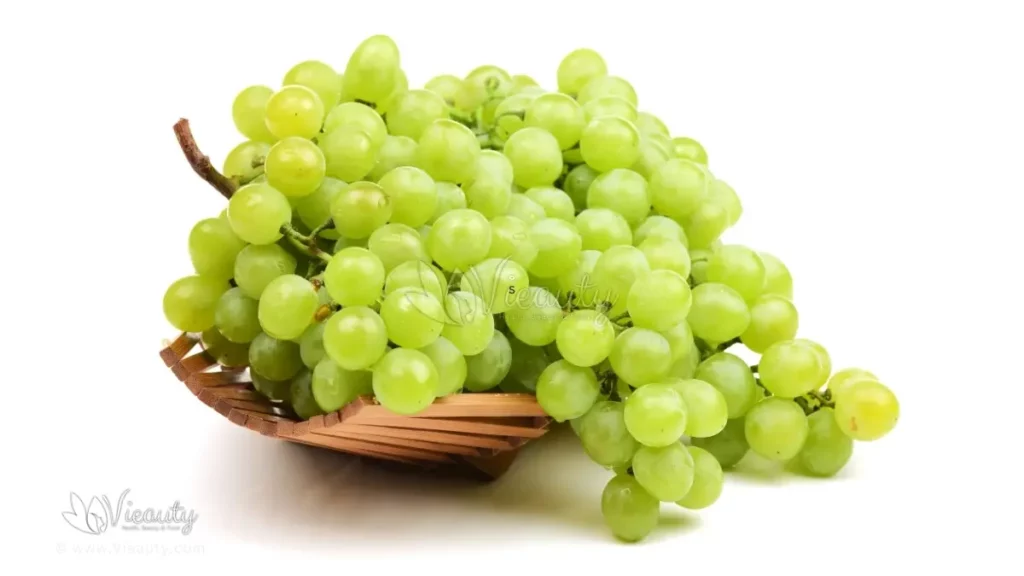
#1. Grapevine Leafroll Disease
Imagine a scenario where mealybugs are like the uninvited guests at a vineyard party – they stroll in, wreak havoc, and leave you with regret. That’s essentially what happens with grapevine leafroll disease; these tiny insects carry a virus that turns vibrant green leaves into twisted, red-tinged scrolls of misery. Not only do these infected leaves look like they partied too hard last night, but they also disrupt the vines’ growth process, leading to grapes that are as unimpressive as a high school project completed the night before it’s due.
What happens when your favorite bottle of wine suddenly tastes more like a disappointing first date than the rich, velvety flavors you expected? You can thank grapevine leafroll disease for crashing this oenophile’s party. As this viral troublemaker stealthily spreads from vine to vine through unwitting mealybug agents, it brings decreased grape quality and an unwelcome reduction in wine production. Just like how that one friend who always shows up late ruins your perfectly planned day out – grapevine leafroll disease messes with the entire rhythm of winemaking.
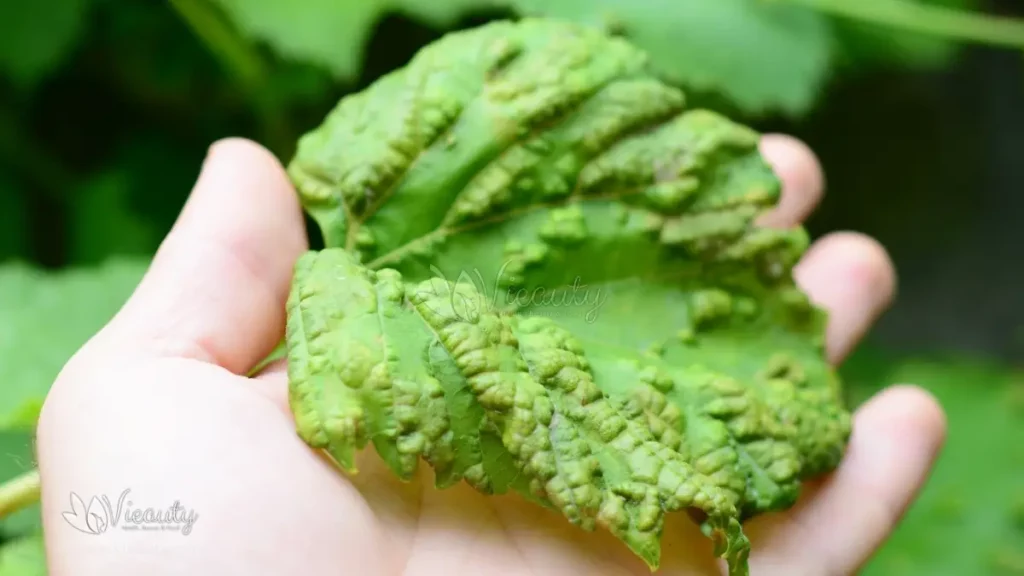
In essence, dealing with grapevine leafroll disease is like trying to salvage a botched DIY project – time-consuming, frustrating, and ultimately disappointing if not managed effectively. Vineyards hit by this pesky problem face not just an aesthetic issue of leaves betraying their usual beauty but also the harsh reality of diminished crop quality and stunted vine development. It’s almost as if those mealybugs rolled out a crimson carpet that leads straight to disappointment when what we really wanted was a path paved with top-quality grapes and exceptional wines.
#2. Downy Mildew: When Rain Clouds Bring Grape Troubles
Ah, downy mildew – the sneaky fungal disease that turns grape leaves into a canvas for brown lesions. When this unwanted guest decides to crash the vineyard party, it’s like a Dr. Jekyll and Mr. Hyde transformation for those once lush green leaves. Imagine your favorite pair of jeans suddenly sprouting mysterious brown spots after a rainy day; that’s what downy mildew does to grape leaves.
Now, let’s talk about how rain plays an undeniable role in this drama. Picture this: you’re all set for a picnic under the sun, but here comes the rain, uninvited and unwelcome – just like the perfect setup for downy mildew to make its grand entrance. Like a best friend turned frenemy, rain can trigger the spread of this fungal villain, ruining grapes worldwide faster than gossip in a high school cafeteria.
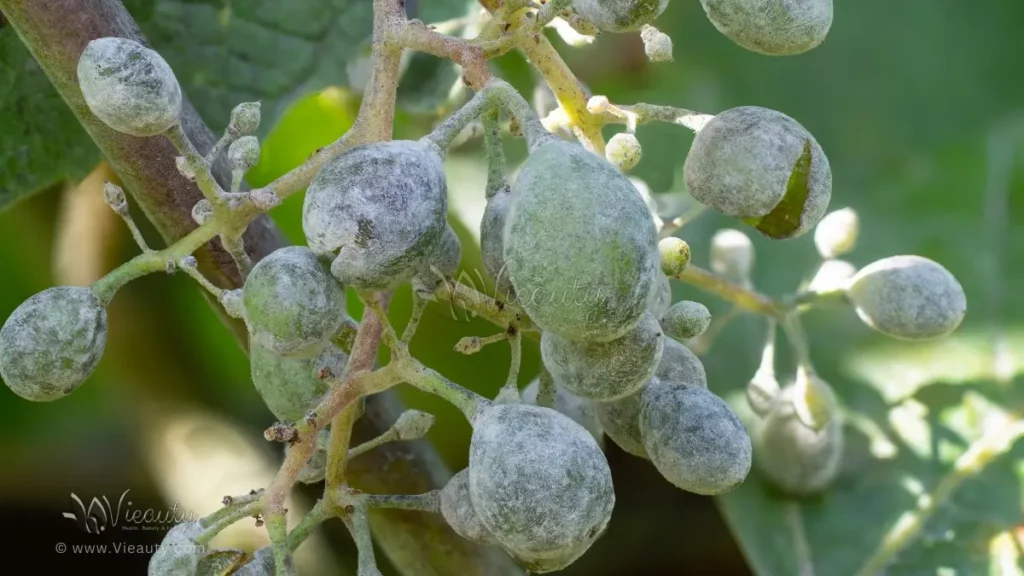
Vineyards across the globe are no strangers to the havoc wreaked by downy mildew. It’s like having that one annoying neighbor who always shows up unannounced and overstays their welcome – except instead of borrowing sugar, this unwanted visitor steals the life out of grapevines. So next time you see dark lesions on grape leaves or hear raindrops tapping at your window, remember: it could be downy mildew plotting its takeover while we’re left singing in the rain – but without the catchy tunes or happy endings.
#3. Black Rot Disease: The Sneaky Threat Among Grapevines
Imagine you’re strolling through a vineyard, admiring rows of lush grape clusters bathed in sunlight. Suddenly, you spot them—ominous black spots dotting the leaves and fruit like nature’s morbid polka dots. Congratulations, you’ve just encountered Black Rot Disease! This insidious culprit targets grapes post-bloom, sneaking up on unsuspecting vines when conditions are just right.
In warm, humid environments, Black Rot Disease thrives like a grape-loving vampire lurking in the shadows. Left unchecked, it can wreak havoc on entire crops faster than you can say “cabernet sauvignon.” Imagine the horror of finding your beloved vineyard transformed into a dark canvas of diseased foliage and tainted fruit. It’s a farmer’s nightmare come true.
So, next time you raise that glass of wine to your lips, remember the silent menace of Black Rot Disease lurking in the shadows. Vigilance is key to protecting these delicate fruits from its clutches. After all, nobody wants their favorite Merlot tainted by the black handprints of this covert troublemaker!
#4. Powdery Mildew: The White Shroud of Grape Trouble
Ah, powdery mildew, the ghostly invader of grapevines worldwide. Picture this: your lush vineyard now resembles a scene from a spooky movie with leaves mysteriously cloaked in a white, powdery substance. But this is no paranormal activity; it’s the work of a fungal disease that has grapes playing dress-up for all the wrong reasons.
This unwanted makeover doesn’t just harm the vine’s aesthetics; it’s like sending them to a spa where photosynthesis goes on an indefinite holiday. With their sunbathing sessions cut short, grape plants struggle to produce at full capacity and yield potential takes a nosedive. It’s like getting your favorite band together but realizing they’ve lost their instruments – things just won’t sound right.
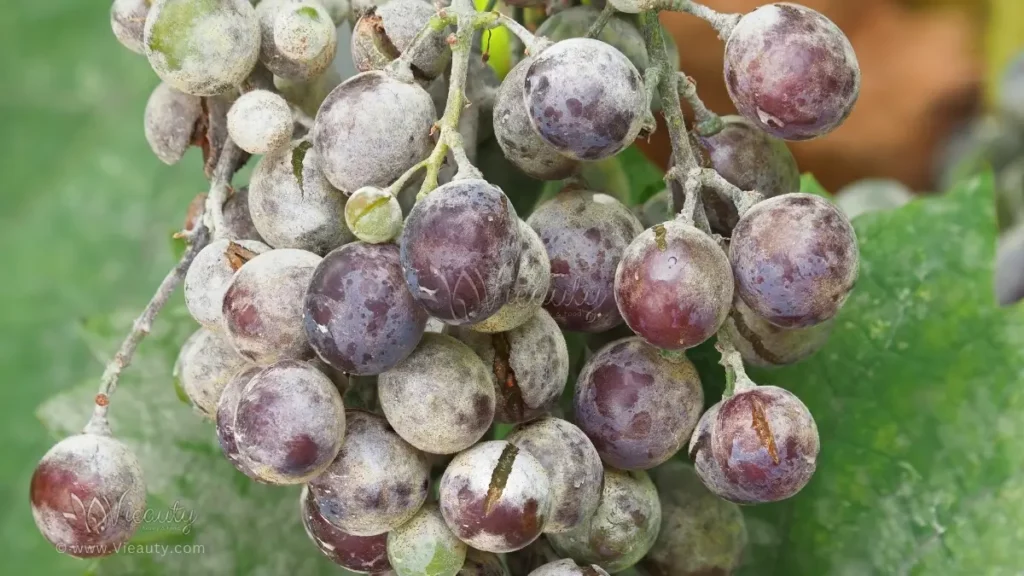
Think of powdery mildew as that uninvited guest who overstays their welcome, lingering on leaves and spreading its powdery charm without asking permission first. And while we believe sharing is caring, this fungus takes it too far by weakening our beloved grapevines. So next time you spot those ghostly tendrils creeping in, remember that these pesky particles are more than meets the eye – they’re trouble brewing for your fruity delights.
#5. Phylloxera Infestation: The Tiny Terror of Vineyards
Ah, the tale of the minuscule yet mighty phylloxera insects wreaking havoc on European vineyards reads like a horror story for grapes. Picture these tiny critters as the vampires of the vine world, stealthily attacking roots and draining away life-giving nutrients. Back in the late 19th century, when leisurely strolls through lush vineyards were all the rage, phylloxera struck fear into the hearts of wine enthusiasts and grape growers alike. These pests didn’t just stop at nibbling on roots; they went for the jugular by limiting water uptake crucial for healthy grapevine growth.
Imagine trying to throw a fancy wine-tasting party only to find your prized grapevines struggling against an army of unseen invaders. It was a battle for survival, with vines wilting under the relentless assault of phylloxera. As if straight out of a drama series, entire vineyards faced decimation, sending shockwaves through the wine industry. Through this dark period, scientists and vintners banded together in a race against time to save their beloved vines from these underground assailants. The repercussions of this tiny terror reshaped viticulture practices forever.
Fast forward to today – while modern techniques have helped control phylloxera infestations to some extent, these historic events serve as a cautionary tale reminding us that in the world of grapes, even something as small as an insect can cause big trouble. So next time you raise a glass of your favorite vintage, toast not just to good health but also to resilience in face of adversities—both large and microscopic—that threatened grapevines throughout history.
#6. Esca Disease
Imagine a snobby fungus and bacteria dance-off happening right under our noses, or should we say roots? Esca disease, also known as “vine measles,” doesn’t just stop at giving grapes the sniffles; it’s a full-blown wood decay party that ends in vine death. It’s like the worst kind of reality TV drama for your local vineyard. The complexity of this disease is next level – think fungi and bacteria playing an intense game of chess with your precious grapevines.
To put it into perspective, picture your favorite celebrity going off the grid because they can’t handle fame anymore – that’s what happens to vines suffering from Esca disease. No amount of social media break can save them as the wood decay takes over, leaving behind decimated vineyards where once lush rows of grapes stood proudly. It’s like Mother Nature throwing a shady party, and only the fungus and bacteria are invited.
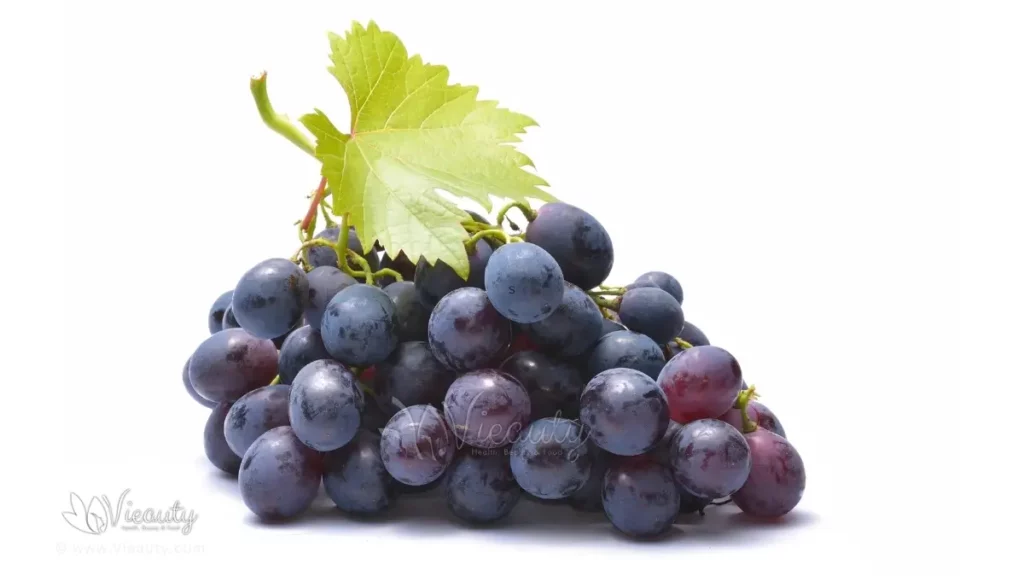
Esca disease isn’t just a nuisance; it’s practically a soap opera for grapevines. While we might be sitting back with our popcorn enjoying the show (from afar!), vineyards around the world are battling this sinister disease every season. So, next time you sip that glass of wine, raise a toast not just to its flavor but also to the resilience required to keep those grapevines healthy amidst this fungal feud! Cheers to fighting the good fight against Esca disease!
#7. Anthracnose: The Unwanted Visitor in Your Grapevine
Alright, so we’ve covered some pretty gnarly grape diseases already, but now it’s time to shine a light on anthracnose—a real buzzkill for your favorite wine companion. Picture this: you reach for that luscious grape, only to find dark lesions staring back at you like tiny potholes in the fruit realm. Thanks to anthracnose, grapes can suffer not only aesthetically but also taste-wise. It’s like showing up to a party dressed to impress and then stepping into a pile of mud—ain’t nobody got time for that!
Now, anthracnose isn’t just chilling around waiting for an invite—it thrives in warm, moist settings like a hot tub in the tropics. So if your vineyards are feeling all steamy and wet, it’s basically an open house invitation for this unwanted guest. Heck, even Mother Nature sides with anthracnose by offering the perfect conditions for its growth. It’s like playing poker with a stacked deck—you’re bound to lose if you don’t ante up with some serious preventive measures.
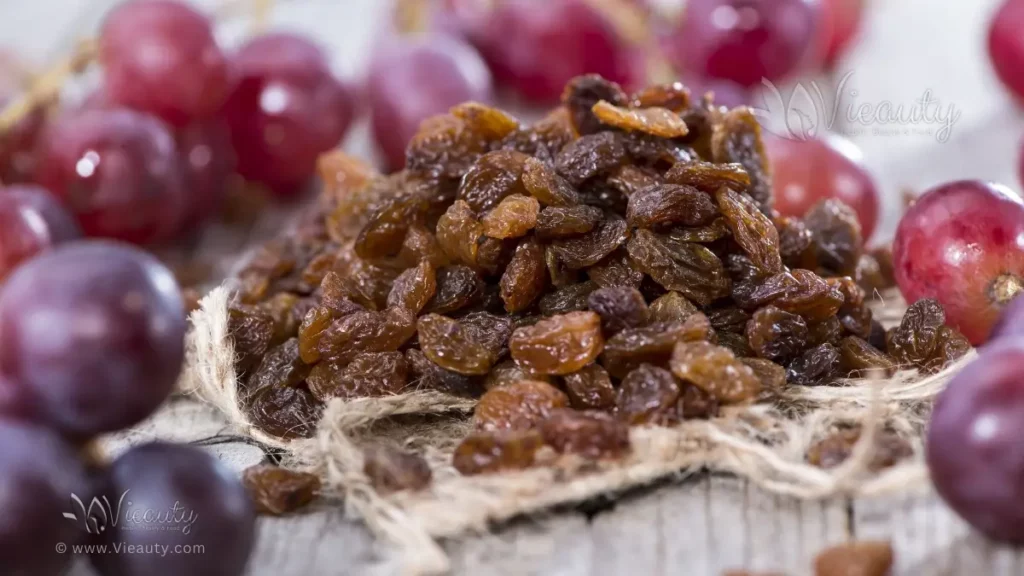
Imagine sipping on a glass of your favorite vintage only to be hit with notes of despair because some anthracnose decided to crash the party uninvited. To keep this pesky disease at bay, vineyards need to be on high alert in areas where warm hugs and wet kisses from the weather are frequent visitors. It may sound alarming, but being aware and proactive about anthracnose ensures your grapes stay looking fresh and tasting fabulous—not tainted by those dark lesions ready to spoil the fun!
#8. Sour Rot: When Grapes Turn into Sour Grapes
Picture this: you eagerly reach for a plump grape from the vine, only to be met with a pungent, vinegar-like aroma. What you’ve encountered could be sour rot, the party pooper of grape diseases. This funky disorder kicks in during harvest season, turning those juicy grapes into sour grenades that can ruin your wine dreams faster than you can say “cheers.”
Unlike a fine wine, sour rot isn’t a product of sophisticated aging; instead, it’s a result of uncouth bacteria and yeasts throwing a wild fermentation fiesta within vineyards. These troublemakers infiltrate ripe clusters, causing them to emit odors akin to an off bottle of vino left open too long. It’s like the grapes couldn’t handle their own party and decided to go sour on us.
For winemakers and grape enthusiasts alike, dealing with sour rot is like finding out your favorite snack has gone stale—they’re left with disappointment where there once was excitement. Amidst the sweet triumph of a bountiful harvest lies the risk of stumbling upon these tart surprises that threaten to put a damper on our taste buds and ferment our plans for enjoying those luscious grapes.
In vineyards around the world, combatting sour rot is just one of many battles faced in preserving grape quality. So next time you savor those succulent grapes straight from the vine or in your favorite glass of wine, remember that while they may delight your senses today, they might decide to turn sour on you tomorrow if given half a chance—proceed with caution!
Savor Your Grapes Responsibly!
Alright, folks, it’s been a wild ride learning about all the grape diseases out there. From sour rot to anthracnose, these tiny fruits sure do have their fair share of enemies lurking in the vineyards. But fear not, grape lovers, because armed with knowledge, you can still enjoy your Merlot without letting these diseases rain on your parade.
Remember, prevention is key when it comes to keeping those grapes healthy and thriving. Just like how we armor ourselves with sunscreen before hitting the beach (because nobody likes a lobster look), grapevines need their protection too. So stay informed on the latest techniques for warding off these pesky invaders. It’s like giving your grapes a little SPF treatment but without the greasy residue.
So next time you pop a juicy grape into your mouth or savor that robust glass of Cabernet Sauvignon, take a moment to appreciate all the hard work that goes into keeping those vines disease-free. And while we may never look at grapes quite the same way again after this eye-opening journey through vineyard mayhem, let’s raise a toast to responsible grape consumption! Because nothing should come between us and our favorite fruit—except maybe a good pair of pruning shears.
Final Tips
So, you’ve learned about the potential grape villains lurking in your vineyard – but fear not! Here are some quick tips to help you keep those pesky diseases at bay and continue enjoying your beloved grapes guilt-free:
- Watch Your Watering: Just like a helicopter parent watching over their child, pay close attention to how much water your grapevines are getting. Overwatering can lead to an environment ripe for fungal diseases like downy mildew, while underwatering can stress out your grapes, making them more vulnerable to pests and infections. Find that sweet spot and stick with it – your vines will thank you!
- Prune Like a Pro: It’s not just about making your grapes look Instagram-worthy; proper pruning can actually help prevent diseases by improving air circulation within the vine canopy and reducing excess humidity (a friend of many grape diseases). Trim away those dead or diseased parts with confidence – you’re basically giving your vines a fancy haircut for health reasons!
- Be on Bug Patrol: Keep an eye out for any unwanted guests buzzing around your precious grapes. Insects like mealybugs can be carriers of viruses that spell trouble for your vineyard paradise. Consider introducing beneficial insects or using organic pest control methods to maintain balance in the ecosystem. Remember, in the bug world, it’s all about diplomacy – unless they mess with your grapes!
Armed with these tips, go forth and savor those juicy grapes without worry! Remember, a little TLC goes a long way in keeping these diseases from crashing your grape party. Stay vigilant, stay informed, and most importantly, stay ready to protect those delicious clusters from the unexpected villains of the vineyard!
Savor Your Grapes, Stay Grapeful!
Before your next grape snack, remember that these succulent bites come with their own set of risks. From Phantom Menace-like diseases to vineyard nightmares, grapes are locked in an epic battle for survival themselves. Whether it’s dodging leafroll villains or Black Rot assassins, grapevines face some serious drama – move over Hollywood! So, be a true grape warrior and guard your next bunch like the royal jewels.
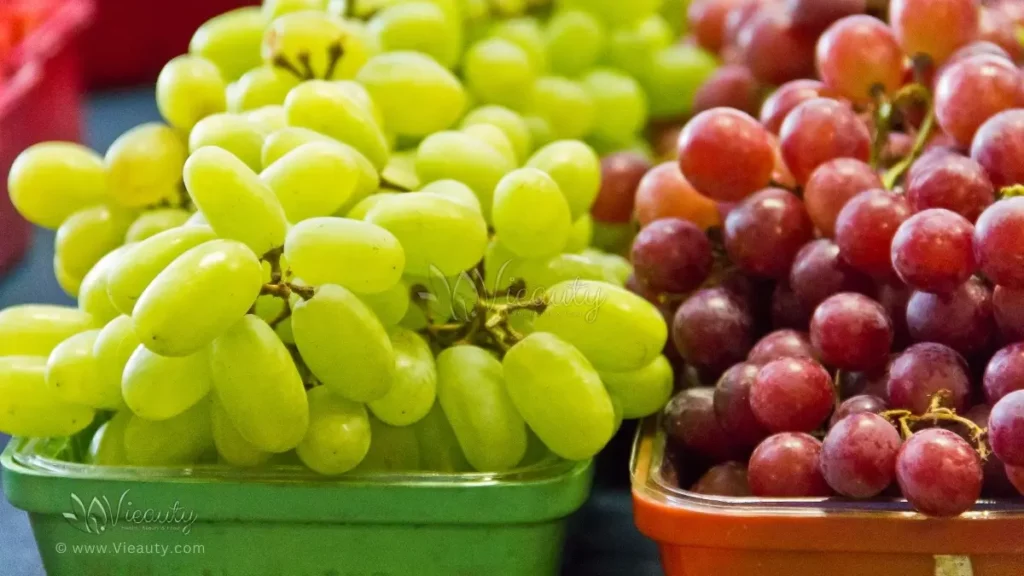
And while we’ve uncovered these seven shady diseases lurking in vineyards like reality TV villains, fear not! Armed with knowledge and a keen eye for spoiled fruits, you can embark on your grape adventure prepared and vigilant. Remember: prevention is key! With this newfound wisdom about grape foes and friendly tips in your arsenal, go forth and savor those grapes responsibly; after all, no hero likes their snack turning against them.
FAQs:
Q: Can I still enjoy my favorite wine without worrying about these diseases?
A: Absolutely! Winemakers take many precautions to protect their vines from disease to bring you that delicious glass of vino.
Q: How can I tell if my grapes have been affected by one of these diseases?
A: Look out for strange discoloration, powdery growths, or unusual odors emanating from your grapes.
Q: Are organic grapes less prone to these diseases?
A: While organic farming practices might reduce some risks, grape diseases can still affect any type of vineyard.
Q: What should I do if I suspect my grapes are diseased?
A: Consult with a local agricultural extension service or professional vineyard manager for guidance on managing the issue.
Q: Can these diseases be harmful to humans if they consume infected grapes?
A: Most of these diseases primarily impact the health and yield of the plants themselves rather than posing direct risks to human health when consuming the fruit.


